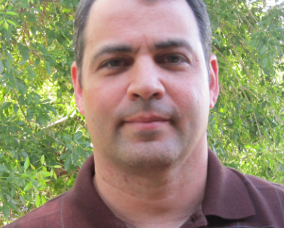How does this change things?
The transformation from how things have been done in the past to how they will now be done using the UD Application can be summarized in the following way....
The problem domain of the original desktop productivity app is an ongoing and real problem which I saw clearly when I worked at IBM. An interface that wraps both the file system and browser tabs may seem to some like it has an imaginary problem it tries to solve, after all, why haven't Apple and Microsoft tried to do this? People think that since most of their time is spent inside an application and that since such applications are able to find recently used documents, there is no real problem that exists. This is missing the real problem by a mile. The ability to find things on your computer is a real problem that does not yet have a good solution. This is because people don't have time to meticulously and carefully plan out where things are kept in their files. And even if you could be careful in all of your choices of where things are kept, there are multiple ways to organize things and dilemmas arise constantly. Do I use a deep hierarchy or a shallow one? Should I organize files by company department or by technology or by date? Should things be grouped together by project or scattered about so that they fit into the chosen organizational scheme that works for future projects?
Once you jog your memory a bit, you can be very sure that, in fact, file system resources that a person might need are rarely in one place and are scattered around the hard drive, even when someone has the time to organize things well and is capable of doing this. When you don't have time or aptitude, there is a greater challenge to find things, but the underlying reality is that things will always be scattered around, unless you are very free of computing responsibility and have a very unusual role or habit.
This points to the obvious need for either a number of tracking documents or a wrapper UI and platform. The UD App is such an UI that is friendly to tracking documents.
My experience at IBM convinced me that smart people, even successful engineers, are not prone to eliminating silos in a shared online directory. When it would have been quite easy to avoid redundant locations for the same documents early on, at the beginning stages of a newly created online location, experienced and accomplished WebSphere professionals were immediately creating redundant locations for the same set of documents! This points to a couple of things:
1) some mandatory top down method and protocol must be used for organization of shared resources that prevents this lack of concern for redundant locations 2) assistance via an AI will be needed to make silos go away and achieve ultimate agility in a company
Also it is often painful to build out a deep hierarchy after having started with a shallow one. Instead of using sym links at the file system level, the UD app provides this at the wrapper level.
Once again, the web urls and applets needed to do things, are included in the same wrapper system so that there is the greatest possible realization of the goal of not having to remember where things are located.
The old way:
a) close each browser tab, one at a time, and for each tab you close, decide if you might not soon be needing that tab again. If you are likely to be needing the tab again, go to the url window of the browser (in the case that the browser bookmarking feature is inadaquate) and manually copy the url, paste it into the most appropriate of the many open documents. When you do need to reopen a tab, go to that specific tracking text file, provided you know and remember which one it was, find and click the link. This process makes a person want to keep many tabs open, and keeping more tabs open than what is currently needed is a bad thing, leading to a cluttered inefficient process....
b) keep browser tabs open, deferring the decisions until later. When the tabs crowd the window, you are forced to review which tabs to keep open, or you are forced to create a separate browser instance which can be time consuming. This overloads the browser with tabs, unless you decide not to multi-task (in order to keep browser tabs and open docs to a minimum), but not multi-tasking is not an option for many people and for many IT and knowledge worker roles
The new way:
The UD App allows you to close an entire group of browser tabs that are assigned a group tag or, if they reside as siblings in the currently visible node, by resource type. With minimal effort, you can reopen them later because of the same addressable group feature.
Our company was founded in July 2017 by Bradley Pliam.
The headquarters is currently in Austin, Texas.
Ideas that have been in gestation since the early 2000s have now finally been given 'wings'.
The mission of the company is to deliver happiness in the form of value and great user experience via high quality software, being honest about what is being delivered, and up-front about any current limitations. The world of software has some great things, along with some not so great things. We intend to be a positive influence.
Meet our current staff...

